#enlightenment spiritualawakening reincarnation tibetan siddhi yoga naga buddha
Text
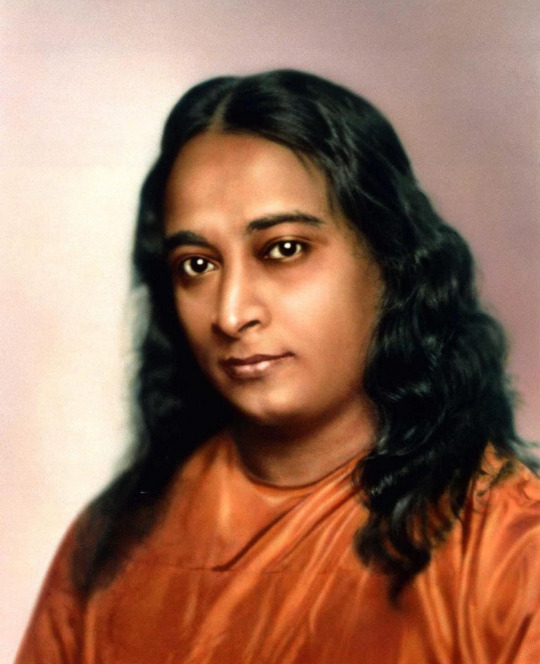
The reincarnation is a series of dreams within a dream...
Someone is born on Earth, in France as a powerful king, rules for a while and then dies. He can be reborn in India and travel in an oxcar to the forest to meditate. Then he can be reborn in America as a successful businessman and when he dreams of death again, he may be reincarnated in Tibet as a Buddhist devotee and spend his life in a monastery. So don't hate anyone and don't cling to any nationality, because sometimes you are Hindu, sometimes French, sometimes English, or American or Tibetan. What is the difference? Every existence is a dream within a dream...
~ Yogananda
#enlightenment spiritualawakening reincarnation tibetan siddhi yoga naga buddha#yogananda#buddha#buddhist#buddhism#dharma#sangha#mahayana#zen#milarepa#tibetan buddhism#thich nhat hanh
13 notes
·
View notes
Text

#buddha#buddhist#buddhism#dharma#sangha#mahayana#zen#milarepa#tibetan buddhism#thich nhat hanh#enlightenment spiritualawakening reincarnation tibetan siddhi yoga naga buddha#yogananda
13 notes
·
View notes
Text

Appearances, like dreams, are devoid of any intrinsic existence. They come from nothing and leave nothing behind no matter how long they last.
How can they appear if they are devoid of intrinsic existence? In fact, they can manifest in infinite ways like a dream or a rainbow that appears only through the combination of many factors briefly coming together.
These factors can come together precisely because they do not exist autonomously, endowed with a permanent reality. No phenomenon exists alone, and none has a solid existence. Appearances will become more transparent and less solid as we familiarize ourselves with seeing phenomena as dreams and illusions.
~Shechen Rabjam Rinpoche. The Great Medicine That Conquers Clinging to the Nature of Reality. Shambhala Publications.
*Photo Shechen Rabjam Rinpoche and Dzongsar Khyentse Rinpoche
#buddha#buddhist#buddhism#dharma#sangha#mahayana#zen#milarepa#tibetan buddhism#thich nhat hanh#enlightenment spiritualawakening reincarnation tibetan siddhi yoga naga buddha
6 notes
·
View notes
Text

Compassion without an Object..
Compassion without an object arises when we rest in awareness, allowing whatever comes to come, open to everything without reification. There is only ungraspable luminous arising. There are no objects and no subjects engaging with objects, no entities out there and no fixed self 'who I am'; there is nothing that exists in itself.
In this state there are no beings to be saved, for what we take to be beings are illusionary energy modes, already fully integrated into the ground nature from which they have never strayed. This compassion is free from any conclusions in the fantasies of samsara. It is not an absence of care for sentient beings, but rather that they are seen directly for what they are, the natural radiance of the open state.
~ James Low
#buddha#buddhist#buddhism#dharma#sangha#mahayana#zen#milarepa#tibetan buddhism#thich nhat hanh#compassion#enlightenment spiritualawakening reincarnation tibetan siddhi yoga naga buddha
6 notes
·
View notes
Text
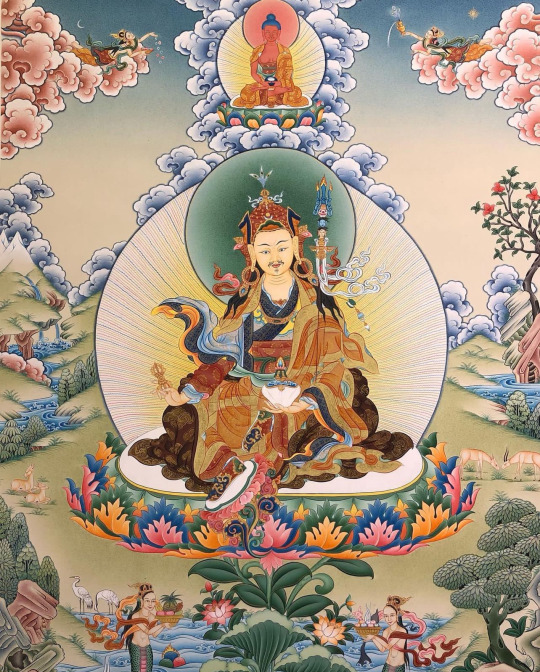
OM AH HUNG VAJRA GURU PADMA SIDDHI HUNG
MAY I REALIZE THE TRUE ESSENCE OF GURU RINPOCHE. MAY I REALIZE MY OWN TRUE NATURE THAT IS MANIFESTED AS GURU RINPOCHE. MAY I SEE GURU RINPOCHE IN ALL SENTIENT BEINGS & THE WHOLE CREATION. MAY ALL SENTIENT BEINGS REALIZE THE SAME.
OM AH HUNG VAJRA GURU PADMA SIDDHI HUNG
#Padmasambhava#Guru Rinpoche#four noble truths#amitaba buddha#buddha#buddhist#buddhism#dharma#sangha#mahayana#zen#milarepa#tibetan buddhism#thich nhat hanh#dzambala#dali lama#dzogchen#vajrasattva#vipassana#vajrapani#vajrayana#manjushri#rainbow body#Bodhisattva#buddha samantabhadra#longchenpa#enlightenment spiritualawakening reincarnation tibetan siddhi yoga naga buddha
5 notes
·
View notes
Text

Even three times a day to offer Three hundred cooking pots of food Does not match a portion of the merit In one instant of love." - Nagarjuna
Offering Food vs. Acts of Love:
Nagarjuna contrasts the merit gained from the ritualistic act of offering food multiple times a day with the immeasurable merit attained through a single act of genuine love. While offering food symbolizes generosity and compassion, the spontaneous expression of love holds incomparable spiritual significance.
#buddha#buddhist#buddhism#dharma#sangha#mahayana#zen#milarepa#tibetan buddhism#thich nhat hanh#enlightenment spiritualawakening reincarnation tibetan siddhi yoga naga buddha#nagarjuna
4 notes
·
View notes
Text

Nagas in Buddhist Mythology: Serpent Spirits of Power and Mystery
*Nagas (Skt. nāga; Tib. ཀླུ་, lu, Wyl. klu)* hold a significant place in Buddhist cosmology, recognized as serpent spirits within the eight classes of gods and demons. This diverse group is sometimes categorized as animals or demi-gods, residing beneath the earth, in water, trees, or rocks. Endowed with magical powers and wealth, they are also associated with certain illnesses transmitted to humans.
Originating from India's ancient snake cults, likely dating back to the Indus Valley civilization, nagas assimilated into Buddhism early on. In Indian mythology, they face predation from the garudas, adding depth to their symbolic significance.
Buddha’s Encounters: Muchalinda and Prajnaparamita Sutras
During Buddha Shakyamuni's meditation under the Bodhi tree, a storm arose, and the naga Muchalinda (Skt. Mucalinda) emerged, providing protection from the rain. This event symbolizes the interconnection between the natural world and the spiritual realm.
Nagarjuna, a pivotal figure in Buddhist philosophy, is credited with retrieving the Prajnaparamita Sutras from the nagas. Entrusted to their care by Buddha Shakyamuni, these sacred texts emphasize the wisdom of emptiness.
The Eight Great Nagas: Leaders and Guardians
Within the naga hierarchy, the eight great nagas or naga kings hold prominence. Virupaksha, the guardian king of the West, assumes a leadership role among them. However, enumerations of these eight nagas may vary across different traditions, contributing to the rich tapestry of Buddhist mythology.
In essence, nagas embody a blend of mysticism, guardianship, and symbolic significance in Buddhism, weaving their way through the narratives of Buddha's enlightenment, the protection of sacred texts, and their role as both powerful beings and potential sources of ailment.
#buddha#buddhist#buddhism#dharma#sangha#mahayana#zen#milarepa#tibetan buddhism#thich nhat hanh#naga#enlightenment spiritualawakening reincarnation tibetan siddhi yoga naga buddha
5 notes
·
View notes
Text
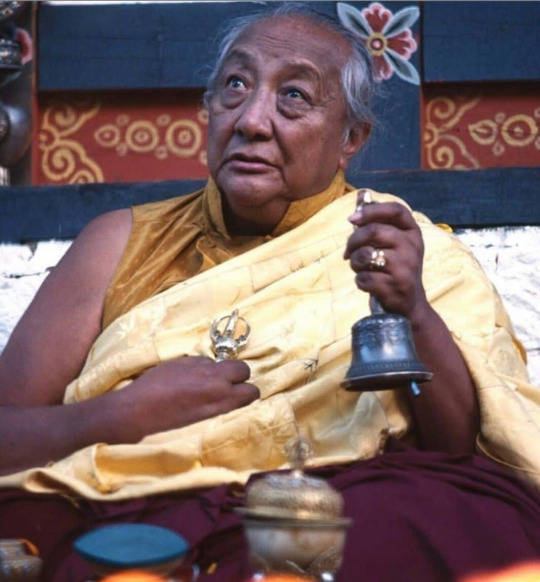
"To help others you must first perfect yourself,
, and to
perfect yourself you first have to cut these three ties: obeying important people, getting entangled in futile attempts to help others, and listening to what people say.
Trying to gratify important people only leads to emotional upheavals. Trying to help people with the things of this life only fuels the fires of samsara. At best, whatever satisfaction you may bring about in these ways will only be temporary; it won't help anyone at the moment of death.
These, in fact, are mistaken notions of compassion. True compassion is to establish beings in the deathless bliss of perfect Buddhahood."
~ Dilgo Khyentse Rinpoche ~
#shantideva#Dilgo Khyentse Rinpoche#Padmasambhava#Guru Rinpoche#amitaba buddha#buddha#buddhist#buddhism#dharma#sangha#mahayana#zen#milarepa#tibetan buddhism#thich nhat hanh#dzambala#dzogchen#dali lama#manjushri#buddha samantabhadra#rainbow body#Bodhisattva#vajrasattva#vajrapani#vipassana#enlightenment spiritualawakening reincarnation tibetan siddhi yoga naga buddha
6 notes
·
View notes
Text
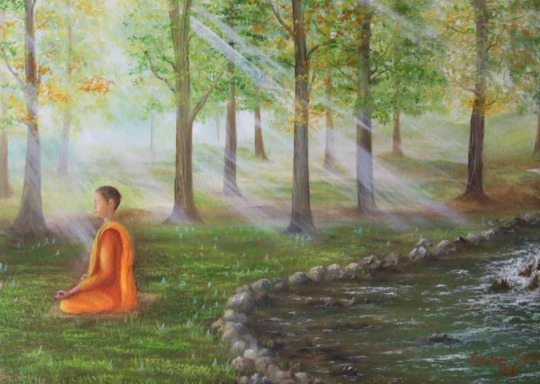
Don't think enlightenment will make you extraordinary - it doesn't.
If you feel special in any way, then there was no enlightenment. I meet a lot of people who think they are enlightened and awakened simply because they have experienced a very touching spiritual experience. They wear their illumination on their sleeves as a badge of honor. Sitting among friends talking about how they are awake while drinking coffee in a cafe. The funny thing about enlightenment is that when it is authentic, there is no one to claim it. Enlightenment is very common; it is nothing strange. Instead of being special, it will make you less special. They will put you right in the center of beautiful humility and innocence. Everyone else may or may not call you enlightened, but when you are enlightened, the whole idea of enlightenment and someone enlightened is a big joke. I constantly use the word enlightenment - not to direct you to it, but to direct you for it. Don't get tied up in the enlightenment.
~ Adyashanti
#buddha#buddhist#buddhism#dharma#sangha#mahayana#zen#milarepa#tibetan buddhism#thich nhat hanh#enlightenment spiritualawakening reincarnation tibetan siddhi yoga naga buddha
2 notes
·
View notes
Text

Accustomed
Accustomed long to meditating on the secret whispered truths,
I have forgotten all that is said in written or printed books.
Accustomed, as I have been, to the study of the eternal Truth,
I've lost all knowledge of ignorance.
Accustomed, as l've been, to contemplating both nirvana and samsara as inherent in myself, I have forgotten to think of hope and fear.
Accustomed, as l've been, to meditating on this life and the next as one,
I have forgotten the dread of birth and death.
Accustomed long to studying, by myself, my own experiences,
I have forgotten the need to seek the opinions of friends and brethren.
Accustomed long to applying each new experience to my own spiritual growth,
I have forgotten all creeds and dogmas.
Accustomed long to meditating on the Unborn, the Indestructible, the Unchanging,
I have forgotten all definitions of this or that particular goal.
Accustomed long to meditating on all visible phenomena as the Dharmakaya,
I have forgotten all meditations on what is produced by the mind.
Accustomed long to keeping my mind in the uncreated state of freedom,
I have forgotten all conventions and artificialities.
Accustomed long to regarding my fleshly body as my hermitage,
I have forgotten the ease and comfort of retreats and monasteries.
Accustomed long to contemplating love and compassion, I have forgotten all difference between myself and others.
~ Milarepa
#atisha#amitaba buddha#tsongkhapa#four noble truths#tantric#green tara#thich nhat hanh#padmasambhava#shantideva#heart sutra#milarepa#mind training#enlightenment spiritualawakening reincarnation tibetan siddhi yoga naga buddha#bodhisattva#meditation#medicine buddha#karma#mindfulness#yogi#compassion
23 notes
·
View notes
Text

The Same Face - Two Expressions
Samsara and nirvana are like two expressions on the same face, one dark and sullen, the other light and smiling. But, whatever the expression, we are not talking about a different face. It is not degraded when smeared with the dirt of samsara, neither is it improved when the dirt of samsara is washed off.
Samsara and nirvana remain within the expanse of the absolute nature in the same way that the universe with its different continents all appear in space.
- Dilgo Khyentse Rinpoche
#buddhist#buddha samantabhadra#tsongkhapa#four noble truths#tantric#padmasambhava#atisha#amitaba buddha#bodhicitta#bodhisattva#medicine buddha#meditation#shantideva#heart sutra#enlightenment spiritualawakening reincarnation tibetan siddhi yoga naga buddha#green tara#karma#blessings
10 notes
·
View notes
Text
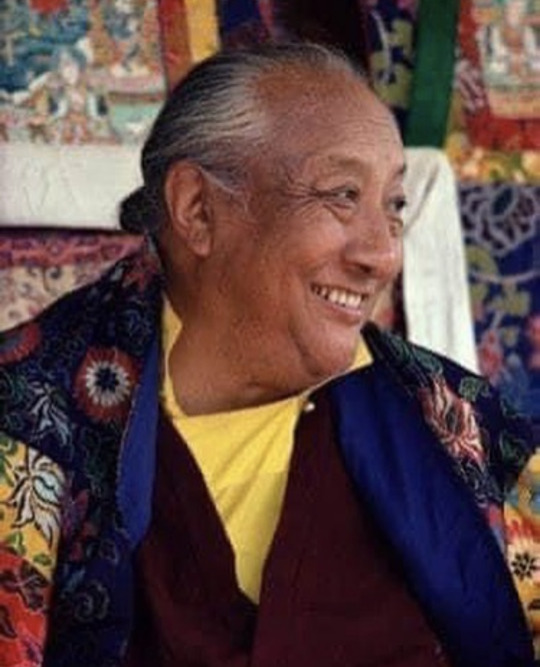
Two great sources of fear in samsara ~
There are two great sources of fear in samsara, the moment of birth and the moment of death. The suffering and fear experienced at these two times have to be faced completely alone; there is no one who can really help us.
The only thing that can help alleviate those sufferings is the practice of the supreme Dharma. Nothing else can do so.
But we do not know how to practice it: we have only become clever at doing worldly things. From an early age we have learned how to make things comfortable for ourselves and how to avoid being uncomfortable. This sort of attitude has resulted in a high degree of material achievement. We can fly through the sky in airplanes, and so on, and we have made life very easy from the material point of view. But actually we are just like children running after a rainbow. These things do not really help us.
We need to turn our minds toward the Dharma by reflecting on these sufferings of birth and death. By doing so, we enter the path, going first through the preliminaries, and then proceeding to the main practice.
As we practice, we will gradually get a true taste of what it means to become disillusioned with world affairs and to progress on the path. This is something that will come with experience.
But we must not postpone it, thinking, "I will do this practice next month or next year ..." If we have received a teaching today, it is today that we should start putting it into practice, for it is only from the moment we actually plant a seed that it will start to sprout.
Kyabje Dilgo Khyentse Rinpoche.
#buddha#buddhist#buddhism#dharma#sangha#mahayana#zen#milarepa#tibetan buddhism#thich nhat hanh#tantric#guru rinpoche#enlightenment spiritualawakening reincarnation tibetan siddhi yoga naga buddha#amitaba#avalokiteshvara#Shantideva#samsara#stupa#Bodhisattva#medicine buddha#meditation#four noble truths#padmasambhava
5 notes
·
View notes
Text

This is the internal circle of the Wheel of Life(Bardo), which is separated into two highly contrasting sections.
In the White area, future people, gods, and demigods are portrayed while in the black section are the hell beings, animals, and the hungry ghosts who are being directed towards the lower domains.
#buddha#buddhism#buddhist#dharma#sangha#mahayana#zen#milarepa#tibetan buddhism#thich nhat hanh#dhammapada#karma#mindfulness#dakini#four noble truths#equanimity#pure land#avalokitesvara#padmasambhava#enlightenment spiritualawakening reincarnation tibetan siddhi yoga naga buddha#impermanence#tsongkhapa#manjushri#meditation#medicine buddha#heart sutra#right view#bhutan#thailand#bodhisattva
13 notes
·
View notes
Text

Tilopa repeatedly said to Naropa when giving tantric transmission:
Look into the mirror of your mind,
which is Mahamudra, the mysterious home of the dakinis.
Having received this transmission, the student recognizes the Great Mother as the nature of reality.
As Milarepa's female student Sahle Aui sang to her guru, demonstrating her understanding and devotion:
You ripened the unripened,
You emancipated those who were not free.
You made me realize that all Manifestations in the outer world Are unreal and magic-like.
I have thus seen the Mother Of the illuminating [nature of phenomenal, By introducing the student to the dakini, the guru is introducing his or her own realization and the treasury of the lineage's realization as no different from the student's.
And the student's response is spontaneous devotion and appreciation of the guru's kindness.
In the process of transmission, the guru also introduces the student to the masculine principle, the skillful means to apply wisdom in the world.
This transmission is also fundamental to the path, for wisdom without skillful means cannot manifest in compassionate or effective action in any meaningful way.
Both feminine and masculine aspects are necessary for full development and completion of the path.
But these aspects are elaborations of the fundamental ground, the infinite expanse, which precedes gender entirely.
#buddha#buddhist#buddhism#dharma#sangha#mahayana#zen#milarepa#tibetan buddhism#thich nhat hanh#tilopa#tantric#enlightenment spiritualawakening reincarnation tibetan siddhi yoga naga buddha#nagarjuna#Naropa
0 notes
Text

Padmasambhava, also revered as Guru Rinpoche and known as the "Lotus from Oddiyana," was a renowned tantric Buddhist master from medieval India. He is celebrated for bringing Vajrayana Buddhism to Tibet around the 8th or 9th century. Among his notable contributions was the construction of Samye Monastery, Tibet's first Buddhist monastery. While details about his historical life are sparse, his connection to Vajrayana and Indian Buddhism is well acknowledged.
Over time, Padmasambhava's significance in the spread of Buddhism to Tibet grew immensely. By the 12th century, numerous hagiographies began to emerge, further elevating his status. These texts portrayed him as a figure who subdued Tibetan spirits and gods and hid various secret texts, known as terma, for future discoverers or tertöns. Among the earliest biographers of Padmasambhava was Nyangral Nyima Ozer, who authored the "Zangling-ma" (Jeweled Rosary). He played a pivotal role in shaping the Padmasambhava mythos, particularly linking Padmasambhava prominently with the Great Perfection.
#Padmasambhava#Guru Rinpoche#enlightenment spiritualawakening reincarnation tibetan siddhi yoga naga buddha#buddha#buddhist#buddhism#dharma#sangha#mahayana#zen#milarepa#tibetan buddhism#thich nhat hanh#four noble truths#Longchenpa#buddha samantabhadra#Dzogchen#manjushri#amitaba buddha#vajrasattva#vajrapani#Avalokiteshvara
1 note
·
View note
Text

Buddha All meditation must begin with arousing deep
compassion. Whatever one does must emerge
from an attitude of love and benefiting others."
Milarepa
#buddha#buddhism#buddhist#dharma#sangha#mahayana#zen#milarepa#tibetan buddhism#thich nhat hanh#equanimity#enlightenment spiritualawakening reincarnation tibetan siddhi yoga naga buddha#right view#four noble truths#tsongkhapa#impermanence#padmasambhava#pure land#mahasiddha#manjushri#maitreya#medicine buddha#dakini#diamond sutra#gururinpoche#bodhisattva#amitaba buddha#avalokitesvara#shantideva
83 notes
·
View notes